The large, three-storey historic stone building at 221-223 St. Vincent Street in Port Adelaide is one of the last vestiges of a business once integral to South Australia’s maritime commerce. Its founder, William Russell, was a prominent figure in the nineteenth century Port and one of the community’s best-known sail-makers and ships’ chandlers. Born in Great Britain, he immigrated to South Australia with his family while still a child and later learned sail-making from Captain Edward French. Russell subsequently worked in the sail-making industry and entered into a business partnership before starting his own sail-making shop and chandlery in 1870. The business continued to operate after his death and passed on sail-making traditions to subsequent generations through apprenticeship. One of these individuals, Don Lucas, Jr., was the last owner of William Russell’s business and is Australia’s only surviving traditional sail-maker. His work is internationally recognised, and he has manufactured sails for some of the world’s most significant historic watercraft.
Origins: William Russell
William Russell was born in the Orkney Islands on 14 March 1842 to tenant farmer William Russell and his wife Elizabeth (née Bews). Russell’s family were forced to immigrate following the aggregation and ‘enclosure’ of Scottish agricultural properties during the late eighteenth and early nineteenth centuries. Departing the community of Odinstone on the island of Shapinsay, they travelled to the English port of Southampton, where they embarked aboard the vessel William Hammond as government-sponsored immigrants. William Hammond departed Southampton on 21 October 1853 and arrived at Port Adelaide after a passage of 93 days. In addition to his mother and father, Russell was accompanied by an older brother (James) and two older sisters (Elizabeth and Janet).
In his early twenties, Russell developed an affinity for competitive rowing and was a member of Port Adelaide’s short-lived Pelican Rowing Club. He participated in several regattas during the 1860s and was awarded trophies in 1864 and 1867. It was also during this period that he met his future wife, Jane McGregor. They were married on 13 July 1865 at Chalmers Presbyterian Church (today’s Scots Church) in Adelaide.
Sail-Making Career and Other Pursuits
Shortly after arriving in South Australia, Russell assumed a sail-making apprenticeship under Captain Edward French. Upon completing the apprenticeship, he was hired as a foreman for the firm Clarke & McKenzie, a sail-maker and ships’ chandler that also functioned as a grocer and general store. In 1867, Russell went into business for himself and operated from a shop on the corner of Divett and Todd streets. Three years later, he partnered with Henry William Thompson to purchase the firm of his former employers. The business was altered to function primarily as a ships’ chandlery that also specialised in the manufacture and repair of rigging and sails. In 1874, the partnership between Thompson and Russell was dissolved by mutual consent, and the latter once more became sole proprietor of a Divett Street business that specialised in sail-making, ships’ chandlery and provisioning.
Ultimately, Russell moved his business to a small shed on Commercial Road next door to the Exchange Hotel (today’s Lighthouse Hotel). By the early 1880s, he was also engaged in coastal trade, and co-owned the ketches Young E.B., Crest of the Wave, Spindrift, Gambier Lass, Capella and Elizabeth Annie. In addition to his work interests, Russell was a keen supporter of the Port Adelaide Institute and Institutes’ Association, sat on the board of the Public Library, Museum and Art Gallery, and was a member of the Port Corporation. Noted for his ‘quiet and unassuming’ nature, he was also a competitive yachtsman and avid participant in sailing races during his youth. In 1869 he was a co-founder of the South Australian Yacht Club—the precursor of today’s Royal South Australian Yacht Squadron—and co-owned the 52-foot (16-metre) racing vessel Magic. Russell’s interest in mathematics and astronomy likely motivated him to become the first student to enrol at the University of Adelaide on 21 March 1876. He studied for three years, but did not complete a degree. At the time of his enrolment, Russell was living on Lefevre Peninsula in the District of Glanville. He later moved his family to a home on Union Street in Semaphore.
The Lucas Family
William Russell operated from the same premises on Commercial Road until his death at the age of 82 on 1 August 1924. The business then passed to William Playfair, the brother of Russell’s friend and colleague John Playfair and a skilled sail-maker in his own right. Following William Playfair’s death in April 1931, Gordon Donald Lucas, Sr. assumed control. Lucas was a sail-maker who commenced his apprenticeship at Russell’s shop in 1927 and was one of Playfair’s most capable and trusted pupils. He passed his knowledge of sail-making and ships’ chandlery on to his son, Don Lucas, Jr., who commenced his own apprenticeship in 1955 at the age of 15.
Father and son co-owned and operated the business for several years. Initially based in William Russell’s shed on Commercial Road, the shop was later moved to a three-storey historic stone warehouse on St. Vincent Street. Built during the latter half of the nineteenth century, the warehouse was originally used as a wool store and later converted into a ship chandlery by Messrs. Paul and Grey. Don Lucas, Jr. purchased the building from ANZ Bank and organised efforts to restore its original historic fabric and character. As renovated, the ground floor included Don Lucas, Sr.’s sail loft, as well as a shop and offices. His private collection of historic sail-making tools and other objects (many of which were used by William Russell and are currently in the collections of the South Australian Maritime Museum) were displayed on the first floor. The rest of the first floor housed a cutting table and sewing machine, while the vast, open top floor comprised the sail-making loft. Single-needle sewing machines used in sail manufacture were also located on the upper level.
Don Lucas, Jr. ultimately bought the business from his father and shifted its focus towards ships’ chandlery and provisioning. He also operated a ship rigging business from the back of the sail loft and manufactured hand-spliced cable, rat-lines, and other rigging elements for Port Adelaide’s ketch fleet. His father, who refused to retire, continued to work for the business until his death. The company manufactured natural fibre sailcloth for a much longer duration than other sail-makers, and earned a reputation for quality that kept it in business without the need for advertising. Ultimately, however, demand gradually waned and Lucas sold the company in 1986.
Recent Years
Don Lucas, Jr. is widely acknowledged as the last traditional sail-maker in Australia, and has manufactured sails and sailcloth for a variety of important historic watercraft. He has worked for Mystic Seaport in the United States, and was responsible for producing sails for the world’s oldest surviving whaling ship, Charles W. Morgan. In 2014, he was tasked to produce a child’s burial shroud for the South Australian Maritime Museum exhibition Rough Medicine: Life and Death in the Age of Sail.
The Commercial Road shed that housed William Russell’s final and most successful sail-making business still stands, although its interior and façade have both undergone considerable alteration. It is currently vacant. A similar fate has befallen the large, multi-storey warehouse on St. Vincent Street. Although the building has retained its historic character on the outside, its interior has been altered and converted into office space. It has accommodated a succession of tenants since 1986, and experienced periods of partial or total vacancy. In June 2018 Refuel Creative took up residence in the building.


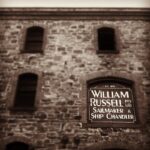

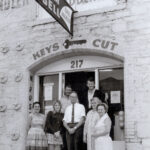
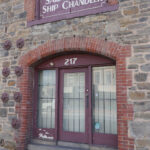
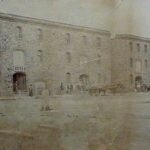
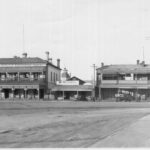

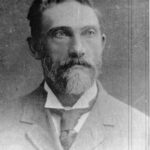
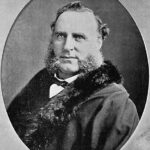
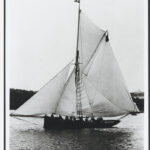
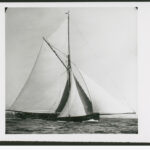

Comments
16 responses to “William Russell Pty. Ltd.”
Hi James,
thank you for the William Russell history. During my research I found some interesting information which you may like to include to your history report.
Cheers Sue
Hi Sue,
James is now working at the Australian National Maritime Museum in Sydney, but we would be interested to know more about your research here at History SA. Please contact us at sahistoryhub at history.sa.gov.au (replacing the at with @ and no spaces in the address). Many thanks for getting in touch, Catherine
William Russell was my great, great grandfather. His daughter Jane was the mother of my maternal grandmother, Marjorie Norris, who had 2 daughters with Stace White. The elder became Senator Pat Giles, who died recently mid-2017. My mother, Elizabeth Silsbury, is still living in Adelaide, and known as a music educator and critic. I was delighted to see the 3 storey still standing in Port Adelaide.
What a fantastic family history Catherine. It is a beautiful old building, great to know you have a connection.
This article on William Russell is very interesting. He came from the same small island where I grew up, and in the census of 1851 the family were at Runabout in Shapinsay, in the west of the island. Odinstone, mentioned here, was built later and is a few miles further east.
Coincidentally, more than a century later, another William Russell from our island settled in Australia and farmed in the state of Victoria.
Glad you found something of interest Marlene. I know the author, James, enjoyed researching it.
He is my Great Great Grandfather.
I met Don Lucas jr years ago when we were both at the Mystic Seaport Museum. I missed the opportunity to study under him then and have regretted it ever since. Is Don still doing stuff? I would love to get in touch with him.
Hi Joel, I’m not in touch with Don personally but I believe the South Australian Maritime Museum have worked with him and may be able to tell you more – https://maritime.history.sa.gov.au/contact/
William Russell was also my Great Grandfather. My mother Edith Margaret was the daughter of his daughter Jane.and James Norris.
She, and her siblings were born in the Russell’s home at Largs.Bay which is still standing. James Norris managed the business for a time as did “Mac” Norris my mother’s brother.
I believe William Russell was the very first enrolment at Adelaide University. He had an observatory attached to his home and was able to give regular meteorological reports to help forecasters with weather reports.
My mother remembered a croquet court alongside the home.
He was also my great-grandfather. It seems that we are related. I understand that William Russell was the father of my great-grandmother, Jane (I think) who married Gunther Germain Norris. Their daughter Marjorie Eva Norris married Eustace White. That did not work out well & Marjorie lived with her parents until their deaths & is buried with them in the cemetery on Port Road. Marjorie had 2 daughters. The elder was Patricia White, who became Pat Giles when she married a WA doctor. She became a Labor senator for WA & died in 2017. The younger daughter, my mother Elizabeth, is still alive in Adelaide. As Elizabeth Silsbury, she had considerable notoriety herself as a music educator & critic. Please contact me – email is csilsbury@dizzy.id.au. This is very exciting.
Dear Moraj –
My maternal grandmother was Marjorie Eva Norris. I understood that her parents were Jane Russell & Heenling Gunther Germain Norris, who may be known to you as ‘James’. I will check with my mother, Elizabeth Silsbury (nee White), still living in Adelaide. She lived with him as a child & was very fond of him. This would make our grandmothers sisters. I do remember Mum talking of “Uncle Mac” & that her grandfather, Heenling/James managed the business for a long time. Please contact me at csilsbury@dizzy.id.au or 0404 802 659.
Thanks for sharing that extra information Morag, it sounds like a fascinating family history.
Hi Morag, This is a great story. I have an article about William and family which I can send you.
I met your sister, Mary (?) some years ago in Canberra and would like to contact her if possible.
Anne
I believe the shop was demolished following the alignment of McLaren parade and wharf. The actual location would now be in the carpark of the Lighthouse Hotel. The Lighthouse hotel is built on the site of the Old Exchange Hotel.
Thanks for adding that detail Frank